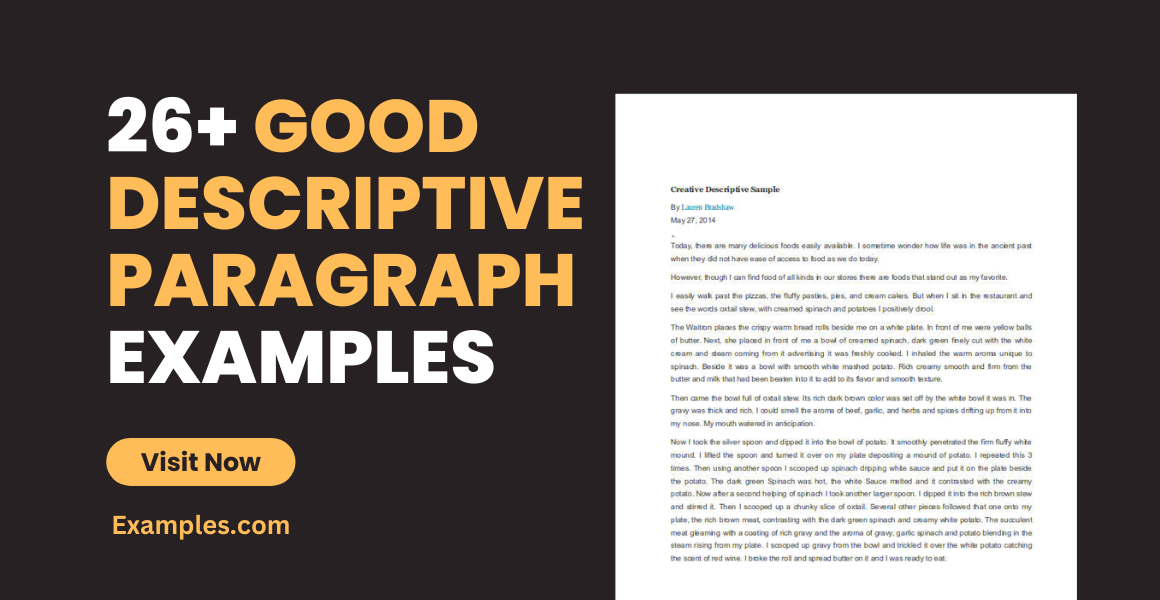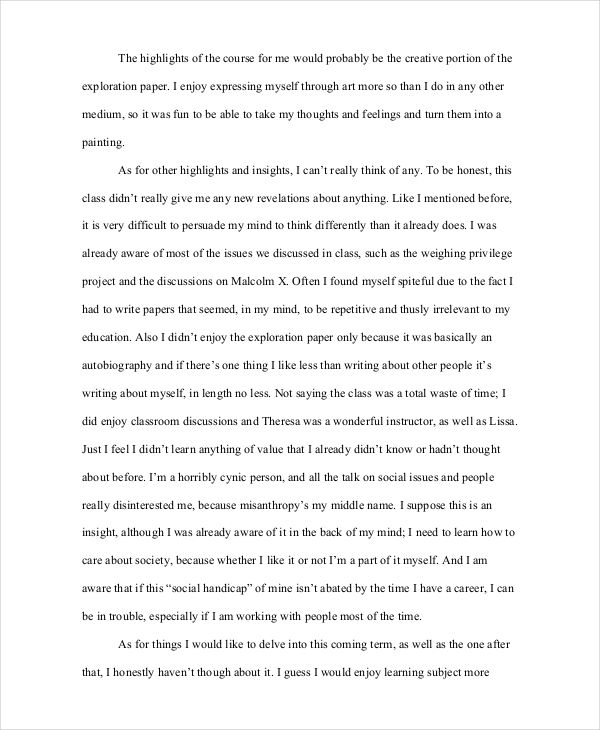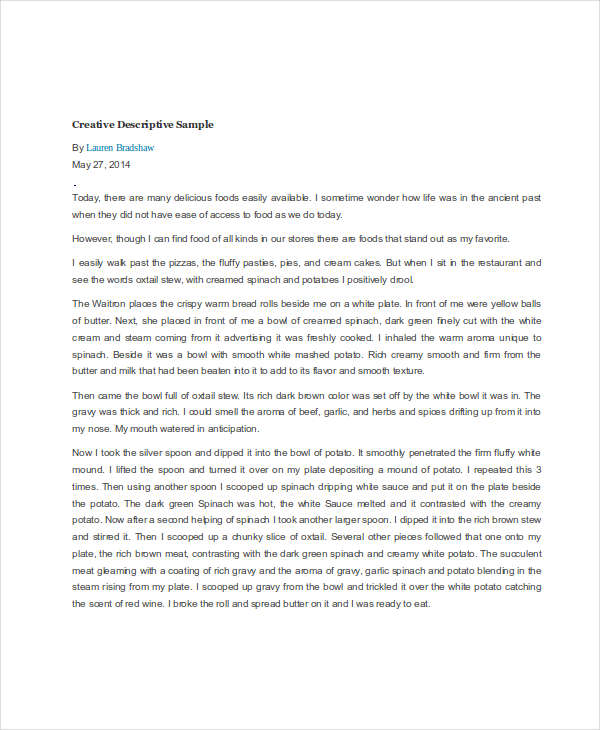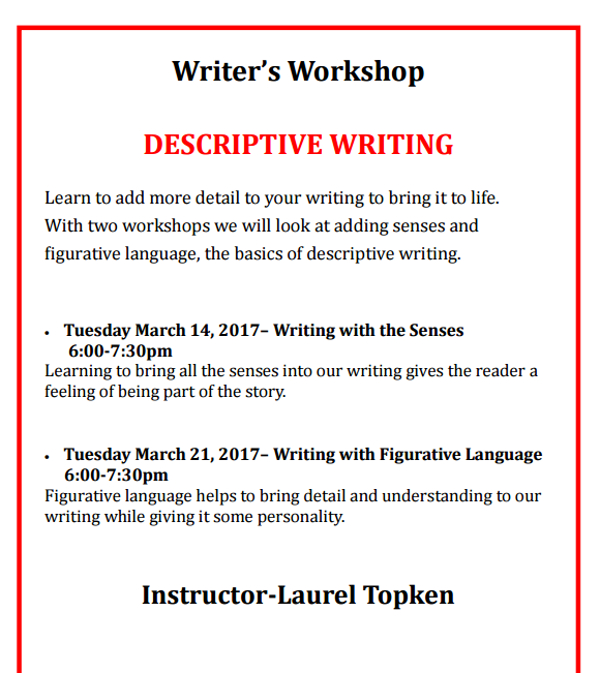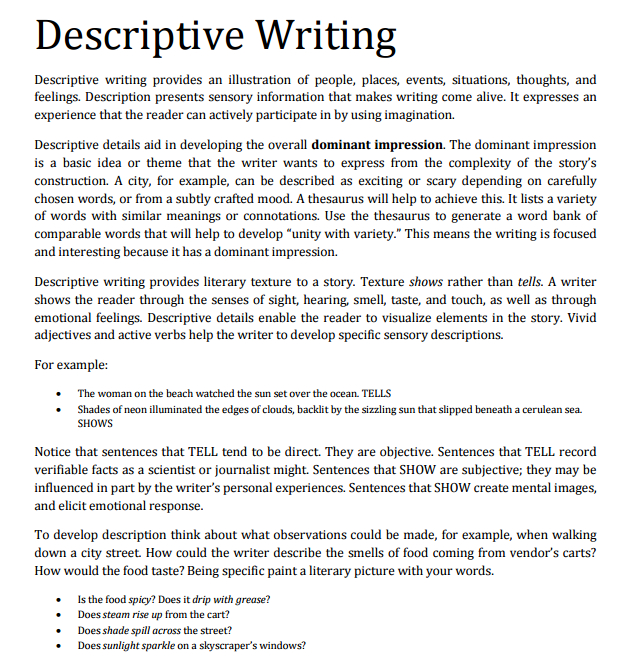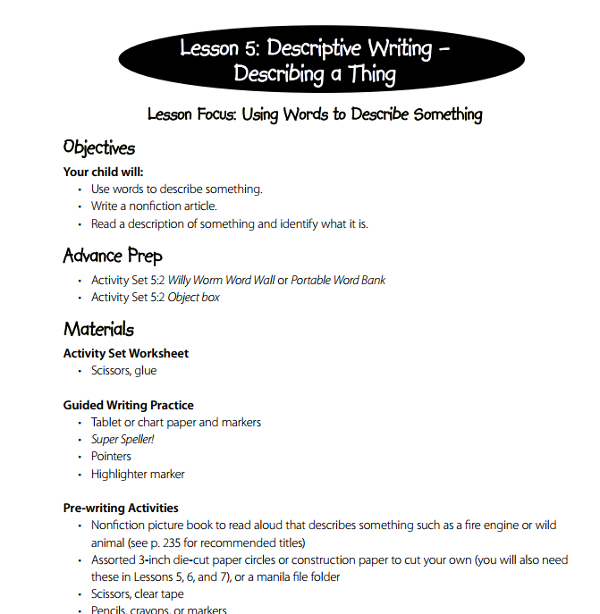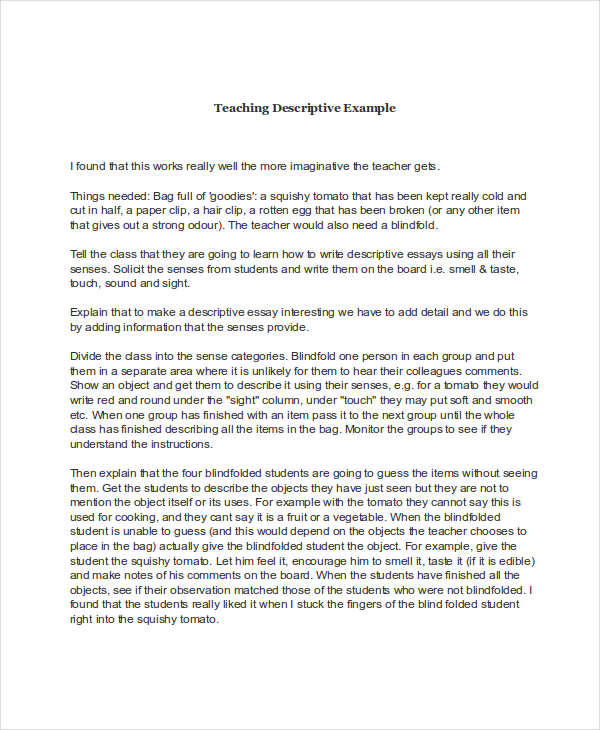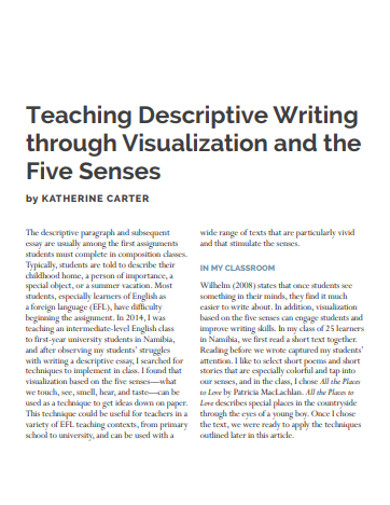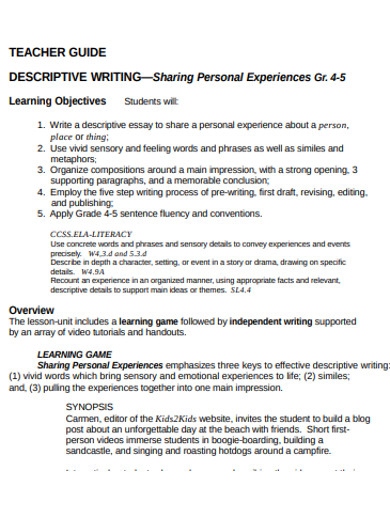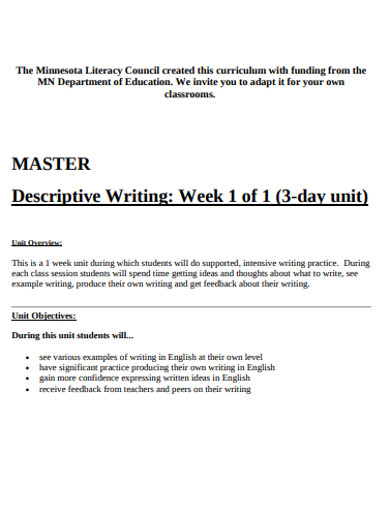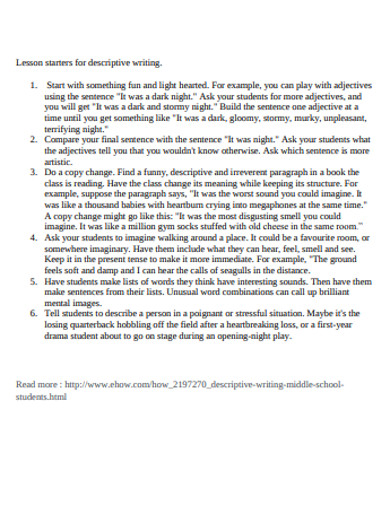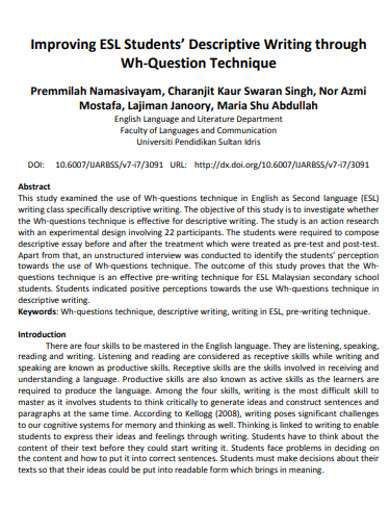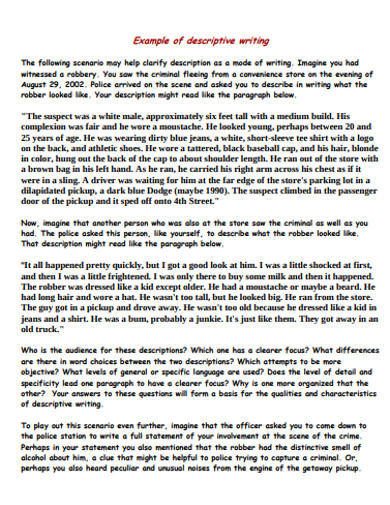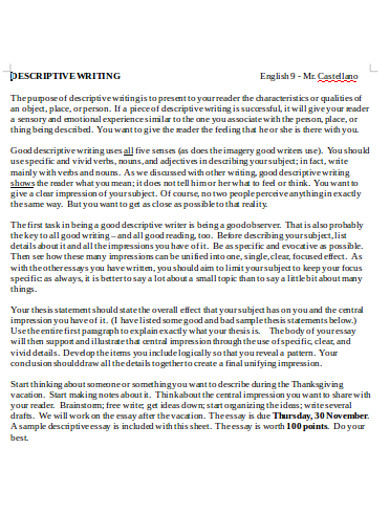21+ Descriptive Paragraph Examples
To compose an impressive descriptive paragraph, it is important to take note that the main purpose of your writing is not to plainly describe but to paint a picture out of your words. Though it may sound confusing, discovering the deeper world of descriptive writing will surely clear things up. In this article, we are going to discuss the fundamentals of descriptive paragraphs and help you write a magnificent composition of your own. Read through to learn more.
There are various ways to apply descriptive writing and write a descriptive paragraph. Before starting with the proper lecture, we gathered some samples to give you a broader overview of developing your descriptive writing skills. Take a look at these samples:
Descriptive Writing Essay Template
Short Descriptive Writing
Creative Descriptive Sample
What Is Descriptive Writing?
Descriptive writing is a writing style which is used to describe in sensory detail the different things, places, people, and ideas. Descriptive writing sketches an image on the reader’s mind by giving a detailed description of the particular topic or subject. By doing this, the writer creates a vivid image of whatever he/she is writing about, and allowing the reader to imagine such an image while reading the composition. These are applied in different literary works such as novels, stories, and metaphoric poems.
What Are Some Examples of Descriptive Writing?
Basically, descriptive writing is creating a picture and scenes out of the descriptive sensory details stated by an author about a certain topic. Now that you already have a broader overview of what is descriptive writing, let’s discuss some documents or literally works that apply practical utilization of this type of writing.
Descriptive Essay
A descriptive essay is a literary form that aims to describe a certain subject such as objects, places, experiences, people, etc. Needless to say, descriptive writing is applied in this composition because it enables authors to use adjectives that incorporates the senses such as touch, taste, hearing, smell, and sight to paint a portrait of the mentioned scenarios in the reader’s mind.
Novel
Novels are extensive fictional narrative works that are commonly written in prose form. These often deal with complex human experiences that are incorporated with a sequence of events and various characters and settings. Novels are also dissected into different types such as mysteries, thrillers, historical, suspense, crime fiction, science fiction, romantic, etc.
Short Story
Short stories are greatly alike to novels; however, these pieces are significantly shorter and less intricate. The adjective “short” in short stories does not really mean brief, but it shows that these works have a limited scope of settings and characters. In fact, a prominent American humanist, Charlotte Perkins (Stetson) Gilman, composed a long short story that is written on about 19 pages. The short story is entitled “Insidious.”
These are still more kinds of literary pieces that involves descriptive writing in the process such as scripts, descriptive dictionaries, poems, feature articles and many more. Remember that descriptive writing is a literary device, not a classification that defines the whole context of a text. Thus, do not be confused if descriptive writing is applied in a narrative, alright?
Free Descriptive Writing
Workshop Descriptive Writing
Simple Descriptive Writing
Printable Descriptive Writing
How to Start a Descriptive Essay?
Writing a descriptive essay is pretty easy because basically, you only need to describe something with the use of words that collaborates with the five senses. However, to make a compelling and interesting composition that people would read through the last punctuation is indeed a terrific challenge. If you want your readers to continue reading the whole essay, you need to be critical with your introduction first. To help you make an alluring intro, you may follow these steps.
1. Consider your topic.
Topics are usually decided before focusing on your introduction. Now that you have a specific topic you want to describe, make sure that your topic is within the set criterion (if there is any) and truly interests you. Your topic will be the basis for your thesis statement which will also be the key topic of the whole essay so choose the finest topic you can pick.
2. Consider your target readers.
Before writing a single alphabetic character, give yourself some time to ponder on who do you want to be the reader of your work. To do this you may try to meditate and think on the question, “If your essay was a speech, who would be your listeners?” Also, do not forget to align your audience to your topic. For example, if you want to describe “family planning” then do not expect grade school students to be your target reader. By doing this, it would be easier for you to identify what language and style type you must apply in your essay.
3. Write statements about your topic.
In this step, we will be needing your pen and paper now. Once you already have them, kindly write any random statements that are relevant to your topic. You may make three to four statements in which all revolve around your main topic. If your topic is something you are very familiar with, you can make use of your own personal experience. For instance, assuming that you want to describe your summer vacation, you can craft a statement like “This essay describes my short stay in Hawaii last summer vacation.” After you have made adequate numbers of sentences, choose the best one. This will serve as your thesis statement.
4. Write some things your reader will learn.
In this step, you need to specifically mention or depict three to four things that your reader will learn upon reading your essay. Make sure these also relate to your thesis statement. Take note of these lessons and utilize the same format in writing them such as:
- Readers will learn how fun my summer vacation was
- Readers will learn what are the superb experiences I encountered in Hawaii
- Readers will learn what are the great places I visited in Hawaii
- Readers will learn what makes the beaches in Hawaii great
These will serve as your topic sentences.
5. Summarize your topic sentences.
Write down all your topic sentences in summary form. A while ago, the same format was used; however, for this part, remove all of them. If you take a hard time to do this, reading the paragraph you have constructed aloud would be a great help.
6. Create your introduction.
Now is the time to make your final intro. Simply craft a summary paragraph of the statements you have stated a while ago. Also, apply variety and creativity in your recapitulation to make the paragraph flow smoothly. Commonly, you can mention your thesis statement in the final part of your introduction.
For experts, you might not need this chronological sequence of steps; nonetheless, for beginners who are unconfident with their composition, relying on this section will never be a bad idea. You can apply it as many as you can until you don’t need it anymore.
Importance of a Descriptive Essay
The basic aim of a descriptive essay is to show the readers, and not simply tell them the details through a thorough description. Descriptive essays let the writer connect better with his/her readers. In descriptive writing, the writer stimulates the readers’ imagination through vivid descriptions of the subject. You may also see formal writing examples & samples.
Thus, it is important for the writer to be observant of the details while being creative and imaginative at the same time. It is hard to capture a reader’s attention and keep it until the end of a story, but a well-crafted descriptive effective essay is able to do both things at the same time.
Through descriptive writing, the reader will be able to recreate images on their minds and feel emotions being depicted in the composition. Therefore, the writer must avoid using vague words and descriptions in writing an essay for descriptive.
Plain Descriptive Writing
Teaching Descriptive Writing
General Descriptive Writing
Personal Descriptive Writing
Civil War Letters Descriptive Writing
Teaching Descriptive Writing
Teacher Descriptive Writing Example
Master Descriptive Writing
Lesson Descriptive Writing
Student Descriptive Writing
Police Officer Descriptive Writing
Descriptive Writing Example
Sample Descriptive Writing
Printable Descriptive Writing Example
Descriptive Writing in PDF
How to Write a Descriptive Paragraph?
Essays are made up of integrated paragraphs. A paragraph is an independent unit of writing a discussion that deals with a specific point or topic that are used to organize longer prose. In its formal sense, paragraphs are consist of one or more sentences and should carry a topic sentence. Similar to essays, paragraphs can also vary according to their purpose. In this section, we are going to give you steps on how you can write a descriptive paragraph.
1. Begin with your topic sentence or interesting idea.
In writing each paragraph it is important to keep it interesting, especially if it is the introduction or the lead of a document. To do this, one can start with a topic sentence. This sentence holds the key idea of the whole paragraph or states what the paragraph is all about. For example, if your topic sentence is “Watching the warm orange sun as it sets from the horizon of the bay makes my eyes misty.” then the whole paragraph simply takes about this specific idea. You can discuss the reason why you act that way or basically anything that supports this sentence.
It is effective to begin your paragraph with the topic sentence because it would establish expectation to your audience what this paragraph is all about at the very opening sentence. Also, it would be a lot easier for you to compose since the following sentences are already guided with the topic you have mentioned. If you want a different approach, you can utilize any interesting detail as your introductory sentence.
2. Support with interesting details.
As mentioned earlier, a topic sentence is supported with relevant details. These sentences or ideas will act as your building blocks to build a concrete message to your reader. Since each paragraph holds different topics, there are also numerous ideas you can include. For example, if you are describing a person, you can elucidate on his appearance and personality. If you are giving a description of an object, you can talk about its size, shape, texture, color, etc. On the other hand, if it is a place that you want to describe, you can add some details about how you feel about the place or the most striking element of the area. Remember, in adding supporting details, only include the most important information about your paragraph to avoid confusing your readers.
3. Include sensory details.
In order for you to make your descriptive paragraph more compelling, it is important to use sensory words. These are the details that incorporate your senses such as sight, hearing, smell, touch, and taste to create a picture of your experience that your reader could also imagine. This also greatly helps notably if you are going to describe something unknown to the common.
There are various sensory details that you could use to improve your description. For example, rather than stating “I love the air of the province.”, you can express this sentence into “I love the soothing fresh air of the province as it calmly enters my nostrils.” By simply adding sensory details, you can upgrade a plain sentence with no fuss.
4. Include figurative language and compelling adjectives.
Figurative languages are the tool that writers use to establish a creative way of expression apart from the conventional and formal order of writing. These create complex meaning, colorful writing, indirect comparison, and clarity. In writing your own paragraph, it is important to use figurative language in the process.
There are several figurative languages that you can utilize such as metaphor, simile, personification, hyperbole and a whole lot more. Moreover, in using them, make sure to apply them correctly and do not overuse these tools, too. On the other hand, using strong adjectives can also enhance the appeal of your works. Considering that descriptive paragraphs are more on describing, it would be helpful for you to learn the nature of adjectives or describing words.
5. End with a terminating conclusion.
As beautiful as your intro, your conclusion should be considered well, too. In ending your paragraph, it is important to have a clean, nice and smooth exit. You can do this by stating the significance of an object or an event that closes your story. Before ending your paragraph, also make sure that you already expressed the complete total message you want to convey before stating your conclusion.
What Is an Example of a Descriptive Paragraph?
In the field of journalism, a lead or lede is considered as the sentence or paragraph that contains the essential information of an article. It also sets the tone and alures people to continue reading the whole content. Moreover, leads are commonly used as an introduction.
Apart from hard-news leads that are commonly briefly written with pieces of information bearing the who, what, when, where, when, why, and how of a story, there is a kind of lead that allows a writer express a story creatively. This lead is what we call a feature lead or delayed lede. It allows a writer to create a scene, describe a subject or tell a short story or anecdote. Furthermore, descriptive writing is also applied in this paragraph.
Difference between Narrative and Descriptive Writing
In school, we learned to write different compositions on the different types of writing styles.
Narrative and descriptive writing are two of the writing styles we’re already familiar with. However, because of their similarities, some are still unable to differentiate both styles from each other. You may also see what is writing used for?
Basically, narrative writing is a narration of an event or a particular experience, while descriptive writing is a description of a certain topic. Still, let’s dig deeper.
1. In narrative writing, the writer recreates a particular memory of experience through by the sequence of events in chronological order. Narrative writing retells events in detail, creating a story out of it. Narrative writing aims to tell a story to its readers. It also includes the basic elements of the story, such as characters, plot, setting, among others, and is often written in the first person or third person point of view.
2. In descriptive writing, the writer illustrates an image of the subject being described. The writer often relies on the human senses upon describing things, places, events, people, feelings, or ideas. This enables the reader to easily visualize the image, as described by the writer. You may also like essay writing examples & samples.
What Are the Types of Descriptive Writing?
Descriptive writing is essentially about describing a subject; however, subjects in a descriptive text differ from each other. Because of this variety, here are the three major types of descriptive writing:
1. Descriptive writing about a person
This type of descriptive writing generally talks about an individual or group of individuals. It creatively discusses the personality, the characteristics, the demographic information and appearance of the described person. In this type of descriptive writing, mentioning details pertaining to the physical feature of an individual is advisable since it is one of the first characteristics that people usually observe first, and it creates an emotional appeal to the reader.
2. Descriptive writing about an object.
Needless to say, this type of descriptive writing depicts an object. In writing a descriptive statement about a thing or object, it is important to make use of the five senses. Treat your readers as innocent children, as if they never met before the object you are describing. For instance, instead of saying “The jacket that Betty uses is nice.”, you can state as “The pink soft furry hoodied jacket that Betty uses is so fantastic.” Since object-related topics commonly hold less emotion, using metaphorical terms would also help in appealing your readers.
3. Descriptive writing about a place
One major type of descriptive writings is about places. This basically features the place but also encompasses everything around and in it. Details are an important factor in this writing since it is like creating a landscape painting with the use of words. You can often start with the most fascinating characteristic of the place or your first or total reaction upon visiting or seeing the place. You can also add some dialects or bizarre qualities of the region or scenery as well.


